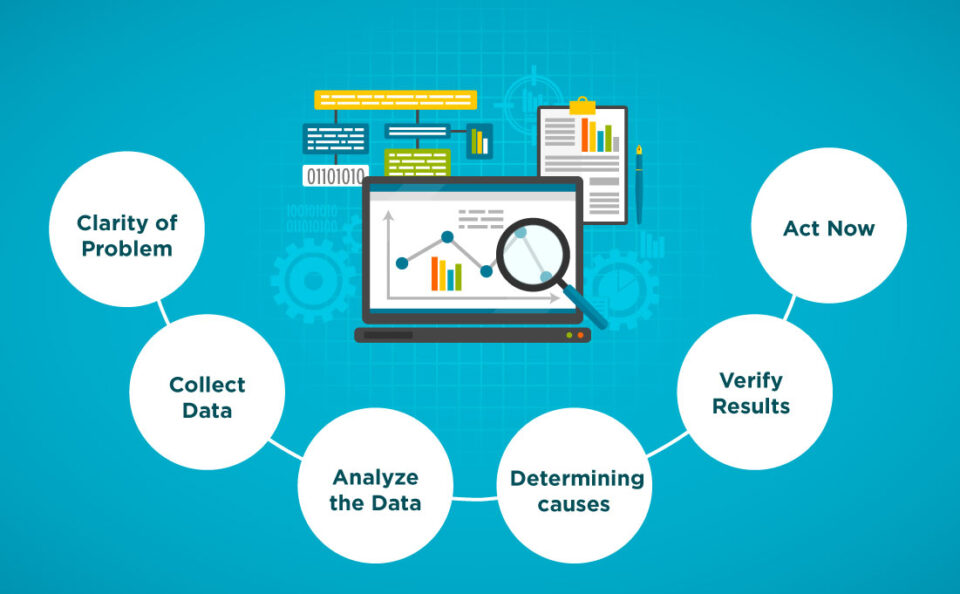Have you ever found yourself puzzled by a sudden drop in sales or a spike in customer complaints? Figuring out why these changes happen is crucial for any business. That’s where diagnostic analytics comes in.
Diagnostic analytics digs deep into your data to uncover the real reasons behind trends and anomalies. Instead of just telling you what happened, it answers the important questions of why things occurred. With these insights, businesses can make smarter decisions, improve their strategies, and tackle issues head-on, ultimately leading to better results.
Keep reading our blog to know the definition, important steps, and significance of diagnostic analytics. Let’s start!
Definition of Diagnostic Analytics
The process of going deeper into data to identify the causes and mechanisms underlying noticed trends, patterns, or anomalies is known as diagnostic analytics. Beyond the "what" that descriptive analytics may provide, it seeks to address these important questions:
What caused a specific pattern or event to happen?
What situation led to it, and how did it occur?
With the context and causality that diagnostic analytics provide, firms are better equipped to make decisions, create improvement plans, and resolve problems.
Purpose of Diagnostic Analytics
The main goal of diagnostic analytics is to identify the root causes of patterns, irregularities, or issues discovered through data analysis. Understanding why something is happening is more important than just reporting what is happening (descriptive analytics).
Important Steps of Diagnostic Analytics

Clarity of Problem
- Clarity of Problem
Clearly defining the problem you wish to study is the first step in solving it. It is helpful to have a specific problem in mind when analyzing any unexpected shift, whether it is a decline in revenue, an increase in customer complaints, or something else entirely.
- Collect Data
Following that, collect appropriate information. This could be any data related to the issue, such as sales numbers, customer reviews, operational indicators, or other data. For reliable insights, the quality and perfection of your data are essential.
- Analyze the Data
Now that you have your information, examine it closely. To find trends, correlations, and patterns, use statistical software and techniques. This investigation contributes to identifying potential problem reasons. For instance, you might discover a link between declining sales and either more competition or a shift in customer behavior.
- Determining Causes
Following data analysis, concentrate on identifying the main reasons behind the issue. Ask "why" repeatedly.
- Verify Results
It's crucial to check your results through research or by comparing them to data from other sources. This makes it more likely that your conclusions will be supported by facts rather than imagination.
- Act Now
Lastly, apply your knowledge to guide your decisions. Create plans of action or fixes for the problems that have been discovered. This could entail optimizing customer support, changing marketing strategies, or streamlining business processes.
Significance of Diagnostic Analytics
- Root Cause Analysis
Root cause analysis is one of the main objectives of diagnostic analytics. Looking at the underlying causes of a specific outcome enables businesses to address the root causes of problems rather than merely their symptoms.
- Making Informed Decisions
Diagnostic analytics gives businesses the knowledge they need to comprehend why specific things happen, which makes it easier to make strategic decisions.
- Performance Evaluation
Companies are able to evaluate how well previous plans and tactics worked, which allows for ongoing development.
- Process Optimization
It helps a business optimize its processes by identifying errors and blockages. Businesses may increase overall efficiency, optimize resource allocation, and streamline processes by knowing the elements that affect performance.
Final Thoughts!
In the crucial world of businesses, diagnostic analytics shines as a powerful tool. It goes beyond the surface, helping companies uncover the real reasons behind trends and challenges. A culture of continual development is promoted, and better decision-making is made possible by this deeper understanding. Businesses can adjust and prosper by optimizing procedures and taking lessons from previous results.
We hope that this effort to spread knowledge will help you and enhance your understanding of technology. For more tech-related content, read our blogs on WisdomPlexus.
Recommended For You:
The Best 5 Data Analytics Tools for 2024
From Data to Decisions: Role of Prescriptive Analytics in Business Success




